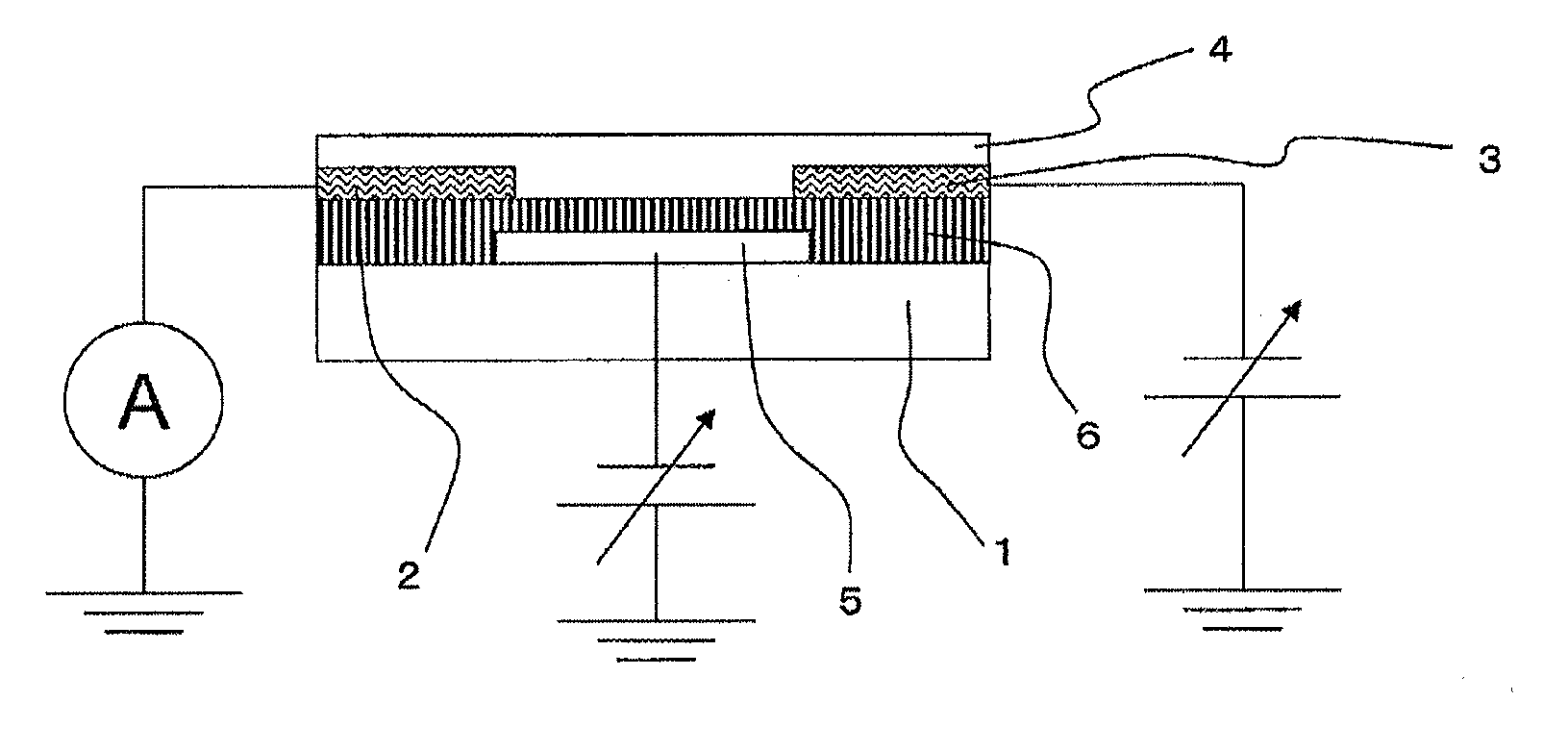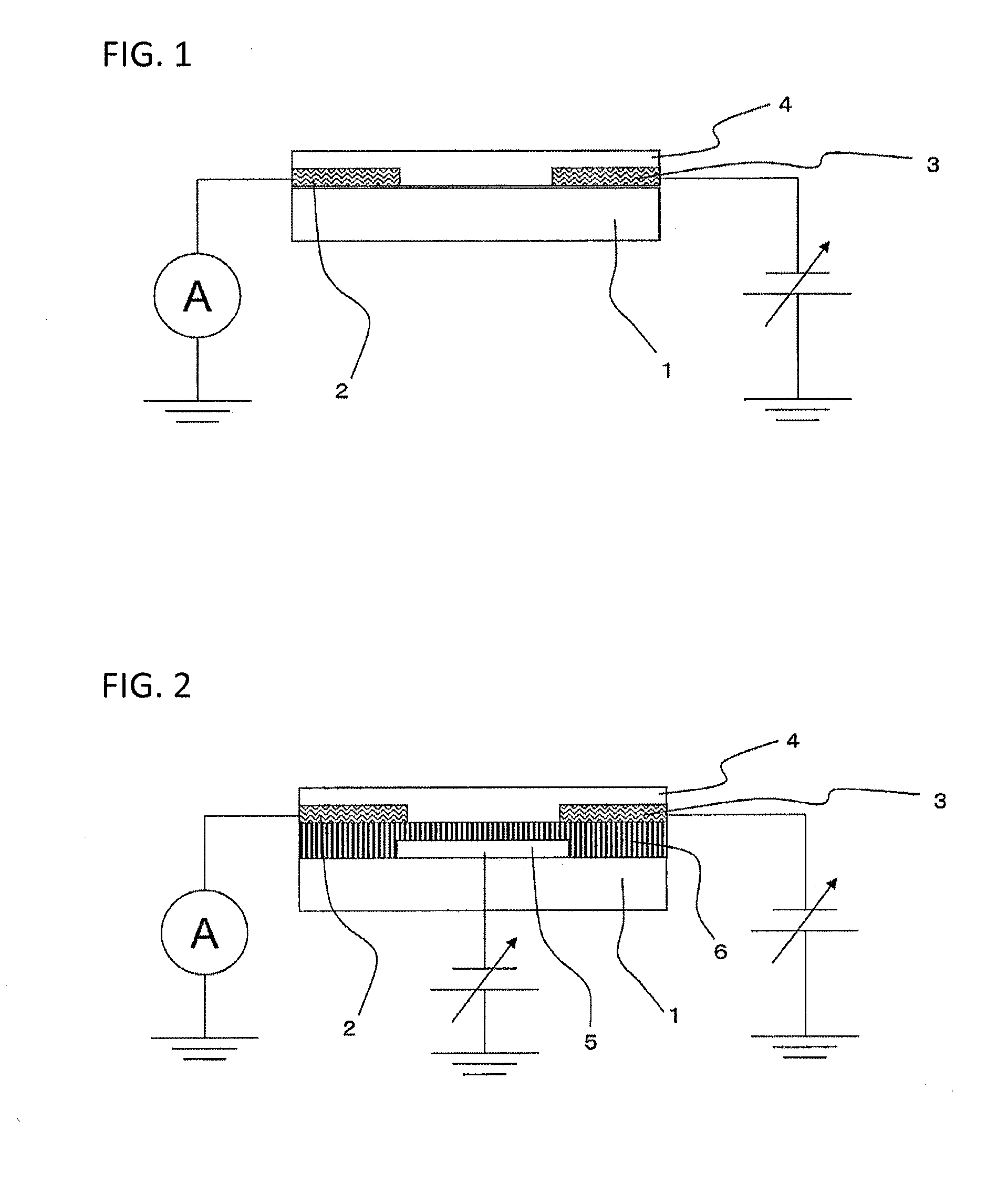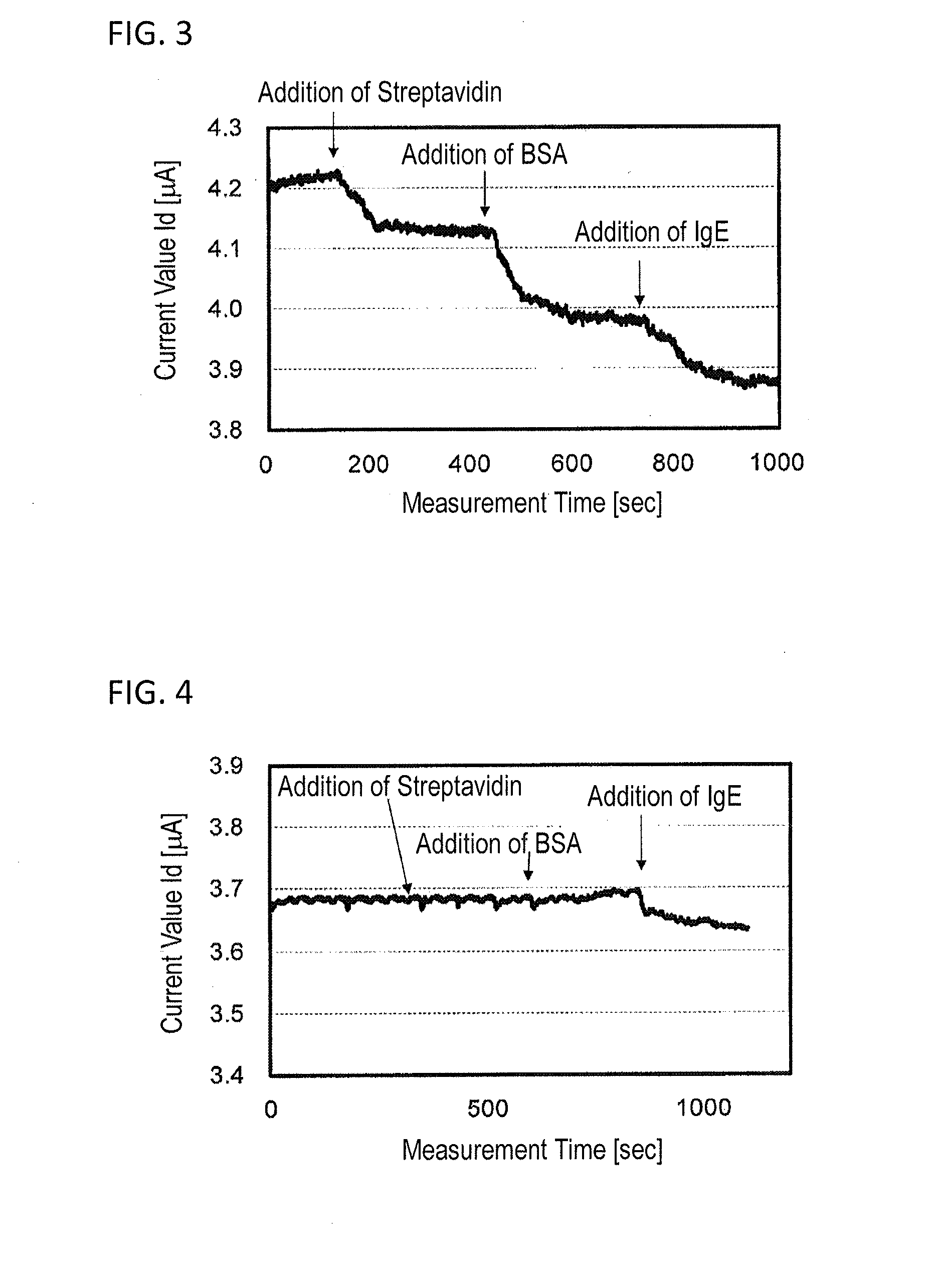Carbon nanotube composite, semiconductor device, and sensor using same
a carbon nanotube and composite technology, applied in thermoelectric devices, instruments, chemistry apparatuses and processes, etc., can solve the problems of difficult control of device variation, limitation of increasing sensitivity, electrical properties, etc., and achieve low cost, high sensing properties, and simple coating process
- Summary
- Abstract
- Description
- Claims
- Application Information
AI Technical Summary
Benefits of technology
Problems solved by technology
Method used
Image
Examples
example 1
(1) Synthesis of Conjugated Polymer (19)
[0091]6.48 g of iron(III) chloride was dissolved in 30 ml of chloroform, and a chloroform solution (20 ml) containing 1.56 g of 3-thiophenemethyl acetate was added dropwise thereto while stirring under a nitrogen stream. The resulting solution was cooled to 0° C. and after stirring for 24 hours, it was poured in 1 l of methanol. The precipitate was collected and washed with methanol and pure water, and 0.5 g of the solid obtained was added to 50 ml of an aqueous 2.0 M sodium hydroxide solution, followed by stirring at 100° C. for 24 hours. A precipitate resulting from neutralization by the addition of diluted hydrochloric acid was washed with pure water and vacuum-dried at room temperature for 24 hours to obtain Conjugated Polymer (19).
(2) Preparation of Semiconductor Solution
[0092]1.5 mg of CNT1 and 1.5 mg of Conjugated Polymer (19) were added to 15 ml of NMP, and the mixture was ultrasonically stirred at an output of 250 W for 30 minutes by ...
example 2
[0101]A sensor in another embodiment was manufactured in the same manner as in Example 1 except that the third electrode 5 and the insulating layer 6 were not formed. The sensor was placed in a measuring box capable of adjusting the atmosphere, and first, the current value flowing between the first electrode 2 and the second electrode 3 was measured in the air and found to be 1.2 μA. Next, an ammonia gas was introduced into the box to have a concentration of 20 ppm, and after a standstill for 5 minutes, the current value was measured, and as a result, the value was greatly changed to 0.7 μA, revealing that the semiconductor device functions as a sensor.
example 3
[0102]A semiconductor device was manufactured in the same manner as in Example 1 except that CNT2 was used in place of CNT1. Next, the semiconductor layer 4 of the manufactured semiconductor device was dipped in 100 μl of 0.01 M PBS (pH: 7.2, produced by Wako Pure Chemical Industries, Ltd.), and the current value flowing between the first electrode 2 and the second electrode 3 was measured. The measurement was performed at a voltage (Vsd) between first electrode and second electrode of −0.2 V in the air (temperature: 20° C., humidity: 35%). To the 0.01 M PBS having dipped in the semiconductor layer 4, 20 μl of a 0.01 M PBS solution of streptavidin (produced by Wako Pure Chemical Industries, Ltd.) was added 2 minutes after the start of measurement, 20 μl of a 0.01 M PBS solution of BSA (produced by Aldrich) was added 7 minutes after the start of measurement, and 20 μl of a 0.01 M PBS solution of IgE (produced by Yamasa Corporation) was added 12 minutes after the start of measurement....
PUM
| Property | Measurement | Unit |
|---|---|---|
| length | aaaaa | aaaaa |
| length | aaaaa | aaaaa |
| diameter | aaaaa | aaaaa |
Abstract
Description
Claims
Application Information
 Login to View More
Login to View More - R&D
- Intellectual Property
- Life Sciences
- Materials
- Tech Scout
- Unparalleled Data Quality
- Higher Quality Content
- 60% Fewer Hallucinations
Browse by: Latest US Patents, China's latest patents, Technical Efficacy Thesaurus, Application Domain, Technology Topic, Popular Technical Reports.
© 2025 PatSnap. All rights reserved.Legal|Privacy policy|Modern Slavery Act Transparency Statement|Sitemap|About US| Contact US: help@patsnap.com



